Why your email and SMS marketing software should be unified—and powered by customer data
Peanut butter and jelly. Toast and butter. Milk and cookies. Email and SMS.
All of these dynamic duos have one thing in common: they’re better together.
In order to truly achieve optimal performance with email and SMS marketing, each channel must be backed by a robust set of Customer-First Data™—which means you need to have them both in one place.
If you’re already doing both email and SMS marketing, now’s the time to consider an all-in-one unified platform.
Keep reading to learn how unified email and SMS marketing software powered by customer data can boost your marketing efforts. We’ll also look at a few tips for strengthening your text message campaigns.
Balancing your email and SMS marketing
Statista reports that 82% of marketers use email, whereas only 69% use SMS.
Why do so many businesses stay away from text message marketing? Here are a few reasons:
- They don’t understand its full potential.
- They lack resources to invest in SMS marketing software.
- They find it difficult to manage customer data across email and text message marketing software.
But while email marketing is known for its high return on investment (ROI), SMS marketing can give your business an additional boost, improving conversion rates and revenue.
In that sense, balancing your email and SMS marketing is crucial for driving growth. Both channels bring something different to the table.
Email marketing is highly competitive. It’s a tall order making your emails stand out in the hundreds of emails a person receives every day. Also, people don’t check their emails as frequently as text notifications, so email as a marketing medium is less urgent.
Conversely, building an SMS list can be difficult because people are more likely to opt in their email addresses than their phone numbers. But considering Americans check their mobile phones once every 4 minutes, once you have a customer on your list, you can use text messages for time-sensitive communications—that go beyond just appointment reminders and transactional updates.
In reality, email and SMS complement each other. Balancing these two channels with a smart sending strategy—rather than mass text messaging and emailing at the same time—is key to improving click and conversion rates.
If that sounds complicated, the good news is that using a single email and SMS marketing software solution makes it easy. It’s even better if the messaging service has a rich customer database and robust data engine.
A perfect fit would be a customer data platform (CDP) like Klaviyo that supports both email and SMS campaigns.
Let’s see some of the best CDP use cases, how the platform can unify your email and SMS marketing efforts—and how you can create highly targeted SMS marketing using customer data.
How a CDP unifies your email and SMS marketing
The real difficulty in email and SMS marketing isn’t in sending messages. Anyone can send texts or emails). You need customer data to create highly effective, personalized marketing campaigns.
But the issue isn’t even that businesses lack customer data—they often have access to significant volumes of it. The real issue is that they might not have the technology to store it, analyze it, and unify it across multiple platforms in a way that’s user-friendly.
For example, some companies use customer data to personalize emails. But they use different marketing software for text campaigns, meaning they can’t use the same customer data in their SMS efforts.
That, in turn, creates a whole lot of challenges with:
- Sharing data across a disparate system of technologies, also known as a “Frankenstack”
- Determining how email and SMS marketing each contribute to marketing ROI
- Lack of coordination between emails and SMS, resulting in duplicate messages
A CDP effectively solves these issues by providing you with a single email and SMS marketing platform. It also enables efficient use of your customer data across email and SMS marketing campaigns.
But don’t take our word for it. When Jacob Sappington, email marketing partner at Homestead Email & SMS, switched from an SMS point solution to Klaviyo, he reported savings over $10K in the company’s YoY marketing budget.
“With Klaviyo, we’re able to easily see when emails and texts are going out, all from the same system,” Sappington explains. “This lets us space out our texts and emails so we don’t bug or annoy our subscribers. We get more value for every message we send now, which ultimately leads to more revenue for our business.”
Similarly, when Shoe Sensation switched to Klaviyo to unify email and SMS marketing campaigns, revenue increased 116%.
“It’s so much better now that we have our email and SMS channels integrated on one platform,” says Chris Dillard, digital marketing manager at Shoe Sensation. “We’ve minimized the number of places to go to find data on customers.”
Once you choose an efficient platform that combines email and SMS marketing capabilities with customer data, it’s time to think about how to send the most effective text messages possible. Here’s how to create a high-converting SMS marketing strategy powered by a CDP.
How to run better SMS campaigns without annoying your customers
Smartphones are a big part of every customer’s personal life, and text messages cross a boundary into that personal space. For that reason, spammy SMS messages will likely annoy your customer more than a spammy email might.
Note: There’s an important difference between “spammy messages” and spam. You should never text someone that hasn’t explicitly opted into text message marketing from your business. For more information, see the Marketer’s Manual to SMS Compliance and Deliverability.
But what exactly makes a text feel like spam, or make people want to unsubscribe?
- Content – SMS messages that are irrelevant to the recipient
- Frequency – Too many texts in a short amount of time
- Repetition – Getting multiple of the same text, or seeing the same message over text and email
A recent Klaviyo survey found that the top reason people unsubscribe from a brand’s texts are because of these very reasons, with 73% of respondents saying they’d unsubscribe after receiving too many messages and 69% of respondents said they’d unsubscribe from receiving the same message too many times. Additionally, 39% of respondents said getting the same message via email and text will push them to unsubscribe.
73% of respondents said they’d unsubscribe after receiving too many messages, and 69% of respondents said they’d unsubscribe from receiving the same message too many times.
So how do you do avoid this? With segmentation and personalization.
Segmenting and personalizing text messages ensures their content is relevant to your customers. If you have thousands of customers, don’t worry. You don’t need to create unique messages for each one—you just need to get smart about segmentation.
Using segmentation to send relevant text messages
Segmentation is what enables you to send text messages that feel 1:1, instead of sending a mass text to everyone in your contact list at the same time.
Segmentation helps SMS feel more like a 1:1 communication, as opposed to batch-and-blast sending.
By dividing your SMS lists into segments, you can group customers who have similar attributes, then send them content that’s relevant to those attributes.
For example, you might create an SMS subscriber segment of all your female customers between the ages of 25-30, then send marketing messages tailored to what has historically resonated with that segment of customers.
There are a few ways to collect the data you need to do SMS well, which requires Customer-First Data, or information that’s sourced directly from a prospect, website visitor, or a customer. It’s made up of:
- Personal details that someone proactively gives you, like their email address, phone number, or birthday, otherwise known as zero-party data
- Behaviors that you observe from the actions someone takes on your owned channels, like what products they browsed on your site or what link they clicked in your email, otherwise known as first-party data
What is Customer-First Data?
You can collect this data through:
- Your website eg. when someone views a product page or puts and item in their cart
- Your owned marketing channels (email, SMS, and mobile apps) eg. whether someone clicked a email or not
- Your tech stack and tool integrations eg. whether someone left a review, the loyalty points they have with your brand, etc.
- Stated preferences eg. the information people provide via signup forms, quizzes, etc.
Then, you can take this collected data and turn it into SMS magic. Instead of sending bulk text messages, you can create SMS list segments based on a variety of criteria, such as:
- Engagement eg. open rate, click rate, etc.
- Behaviors eg. viewed product page, last item ordered, item in cart, last order date, left a review, etc.
- Location (particularly important for SMS consent purposes)
- Properties and attributes: name, age, gender, average order value, etc.
- Predictive analytics: customer lifetime value, predicted next order date, etc.
- Marketing preferences: SMS vs. email, frequency, etc.
Note that if you have thousands of customers, manually modifying your segments is going to be a lot of work. Make it easier on yourself by using a CDP that dynamically updates SMS segments for you.
For example, if a customer adds a product to the cart and leaves it behind, your CDP can automatically add the customer to your “abandoned cart” segment.
It gets even better when you have unified email and SMS marketing software powered by customer data. To start, you can send customers messages through their preferred channel—email or SMS, which you can find out by collecting this data through sign-up forms. You also can follow up on your emails with text reminders.
In the above example, with the abandoned cart list, you might want to email potential customers about their abandoned cart, then follow up via text with anyone who still hasn’t made a purchase 48 hours after receiving that email—ensuring they’ll eventually enter their credit card details and make a purchase.
Further personalizing SMS content with dynamic events
What’s the only thing better than sending a reminder to a customer who abandoned a cart? Texting them the exact image of the item they left behind—and a link to their shopping cart.
It’s easy to achieve this using SMS marketing software that supports behavior-based triggers. Klaviyo works with your ecommerce platform to save the following data when a customer abandons a cart:
- Product name/title
- Product URL
- Image
- Product price
- Quantity
- Order total
Then, Klaviyo helps you set up behavior-based triggers for text messages using that data. For example, you can send a reminder with an exact image of the item the customer left behind in a cart with dynamic multimedia messages.
SMS marketing use cases
Using marketing automation and behavior-based triggers works for more than just abandoned carts. You can also use dynamic events for the following SMS marketing use cases:
- Post-purchase follow-up or product review requests when a customer places an order
- Browse abandonment reminders when a customer views a product
- A win-back text for a customer who hasn’t purchased a product for a while
Let’s dig a bit deeper into a few of the SMS marketing use cases you can handle through segmented texts and behavior-based triggers.
1. Engaging your best customers
Keeping in touch with customers is also essential for creating brand loyalty. Engaging frequent customers through SMS will make them feel special—and may even turn them into brand advocates.
You can use SMS workflows to engage your loyal customers by giving them:
- Early access to new products
- Exclusive offers and promotions
- Referral bonuses
- Loyalty program updates
- Brand or product surveys
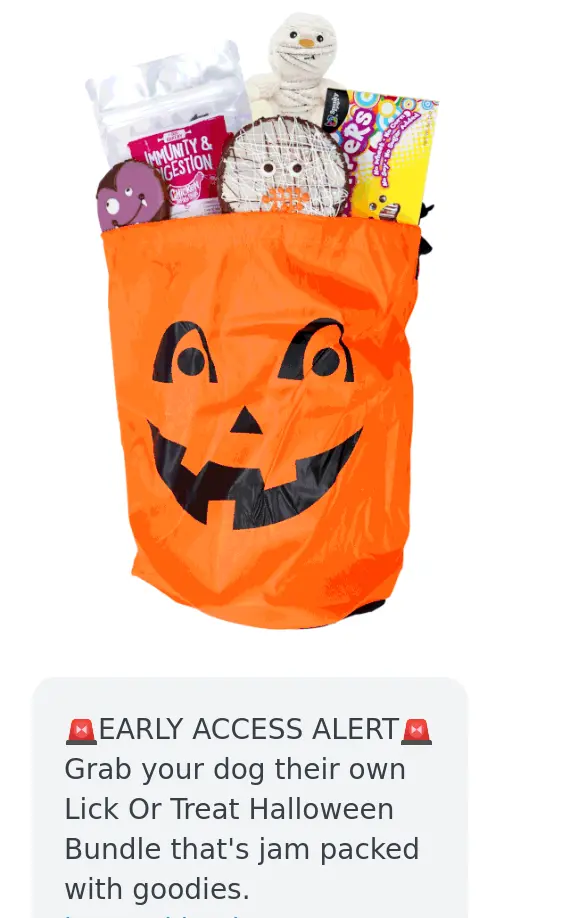
Source: Klaviyo Showcase
2. Recovering abandoned carts
According to the Baymard Institute, the average cart abandonment rate across industries is 69.82%. That means more than two-thirds of your customers will not complete a purchase after starting one.
Customers abandon carts for various reasons, including:
- They don’t have enough time to complete the check-out.
- Shipping costs are too high.
- They’re asked to fill in too much information.
- They have issues with the available payment methods.
Normally, ecommerce platforms use an abandoned cart email flow when a customer abandons their cart. But strategically sending a personalized SMS with an exact product image and a go-to-cart link can be even more powerful.
Consider using data to balance email and SMS outreach by:
- Segmenting your abandoned cart reminders via text to people who prefer this channel, and vice versa for email
- Sending a text to people who still haven’t purchased after receiving an abandoned cart reminder via email
- Sending a text reminder to use the discount code from an email reminder before it expires
3. Nurturing customers post-purchase
Sending customers something as simple as a personalized thank-you message after a purchase creates a positive customer experience. As such, supporting and engaging customers after a purchase is an excellent way to nurture trust and brand affinity in your customers.
Types of post-purchase text messages include:
- Transactional messages: order confirmation and shipment status
- Thank-you messages
- Review or survey requests
- Up-sell and cross-sell messages
- Two-way messaging with customer support
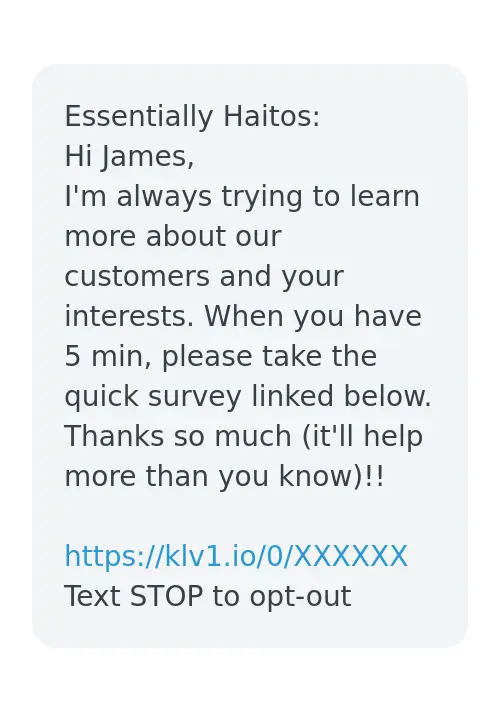
As always, consider how you can use the data at your disposal to create hyper-relevant customer experiences, both through email and SMS.
4. Winning customers back
SMS marketing can help you win back your disengaged customers. Try using a win-back SMS flow to remind them about your brand.
The automated workflow could contain information and incentives to get your customers back, including:
- Discount coupons or promotional offers
- Information on bestselling products
- Surveys on what they want to buy
Of course, these primary SMS marketing use cases are just the basics. An effective SMS marketing platform like Klaviyo offers much more than these essential functions.
Klaviyo integrations take your SMS marketing to the next level
If you’re implementing some of the strategies mentioned so far, you’re already off to a great start.
But odds are you have a robust ecommerce tech stack that you use to conduct marketing activities that go beyond Klaviyo’s core capabilities.
With Klaviyo integrations, marketers can unify and use data from across their tech stack to enrich their SMS marketing efforts. Below are just a few ways using integrations with Klaviyo SMS can help you improve the customer experience.
You can integrate with:
- Quiz and survey tools like Octane AI to personalize texts based on customer responses and results
- Customer support platforms like Zendesk, Gorgias, and Gladly to initiate two-way conversations based on customers’ open tickets or experiences with your support team members
- Affiliate marketing tools like Refersion to make your brand’s affiliates feel like they’re part of your brand with welcome messages, onboarding information, and announcements about new products or upcoming promotions
- Influencer marketing tools like Gatsby and Upfluence to engage with the influencers in your industry and deliver special rewards, create time-sensitive influencer campaigns, and thank influencers when they mention your brand on social media
- Loyalty platforms like LoyaltyLion and Stamped.io to engage with your most loyal customers, encourage repeat purchases, and increase customer lifetime value
- Review platforms like Okendo and Judge.me to send personalized text messages based on positive or negative customer reviews
- Subscription management platforms like Recharge, Bold Commerce, Smartrr, and Skio to reactivate customers’ subscriptions, change subscription preferences, and create reminders about upcoming renewals
- Shipping and logistics platforms like ShipBob, AfterShip, ShipStation, Wonderment, and Narvar to send texts with real-time package tracking or personalized texts about order delays
- Return platforms like Loop or Returnly to relay information about exchanging or returning products, personalize return updates, and provide product suggestions with store credits
When you bring all your data together in one place, that’s where the SMS magic really begins to happen.
Ensuring accurate reporting through multi-channel attribution
Creating an excellent SMS marketing strategy isn’t enough. You also need to measure the results of your marketing campaigns.
But when you use multiple marketing channels, understanding how each channel contributes to your marketing ROI is easier said than done.
Having a separate email and SMS platform is a huge headache because you’re guaranteed double attribution and Klaviyo’s SMS platform is actually very good if you take the time to learn it.
— Jeremy Lipzinski (@JeremyLipzinski) May 14, 2022
To get things in order, you need multi-channel attribution. It helps you understand which channels contribute to sales and which don’t.
Without multi-channel attribution, you might end up believing that one channel drives all the results. The inflated revenue data will make you rely too heavily on that channel, and it might lead to ineffective marketing.
A unified email and SMS marketing platform facilitates proper marketing revenue attribution. Klaviyo uses a model that considers the shared impact of email and SMS channels while offering channel-specific, customizable attribution windows with a default window of 5 days and 24 hours for email and SMS, respectively.
Klaviyo uses an attribution model that considers the shared impact of email and SMS while offering channel-specific, customizable windows.
On the other hand, many alternative SMS providers use longer windows that lead to an inflated understanding of attribution, and they don’t properly account for sales attributed to email or other marketing channels.
And with cooperative last touch attribution, if the SMS channel’s attribution window has closed, but the email attribution window is still open, and the customer interacted with email during that time period, attribution will go to the email.
This way you can be sure the revenue is only attributed to the last message a customer interacted with within the attribution window you set.
Customizing your channel-specific attribution windows will help you correctly attribute marketing revenues, determine which channel works best for you, and understand where there’s room for improvement in your current messaging strategy.
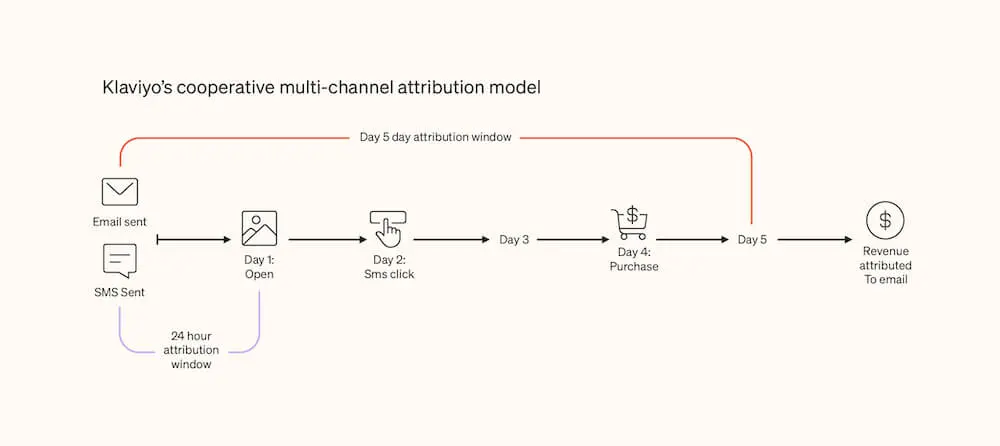
Final thoughts
Email and SMS are two of the primary direct marketing channels that use Customer-First Data. If you’re using different platforms for email and SMS marketing,you aren’t using your customer data to its full potential.
In fact, the best SMS marketing software isn’t just an SMS marketing tool. You’re much better off switching to a unified customer data platform that provides both email and SMS marketing features.
Klaviyo does that—and more—for small businesses. Whether it’s helping you segment email and SMS lists based on customer data, offering valuable technology integrations, or providing in-depth insights about the impact of your available channels, Klaviyo’s got you covered.

Related content

Discover the best marketing automation platform for 2026 and learn how to choose based on data, integrations, scalability, and the features that drive real customer value.
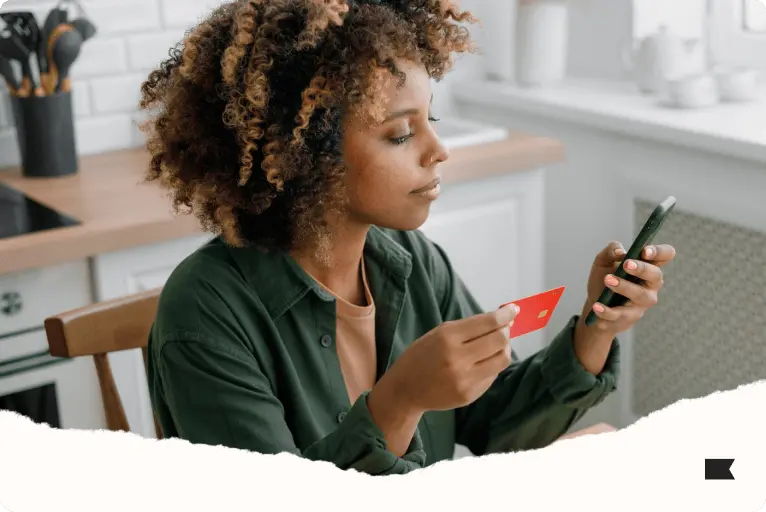
Discover 4 proven ways to reduce cart abandonment and recover lost sales. Learn how to build trust, streamline check-out, and personalize abandoned cart flows to convert more shoppers.
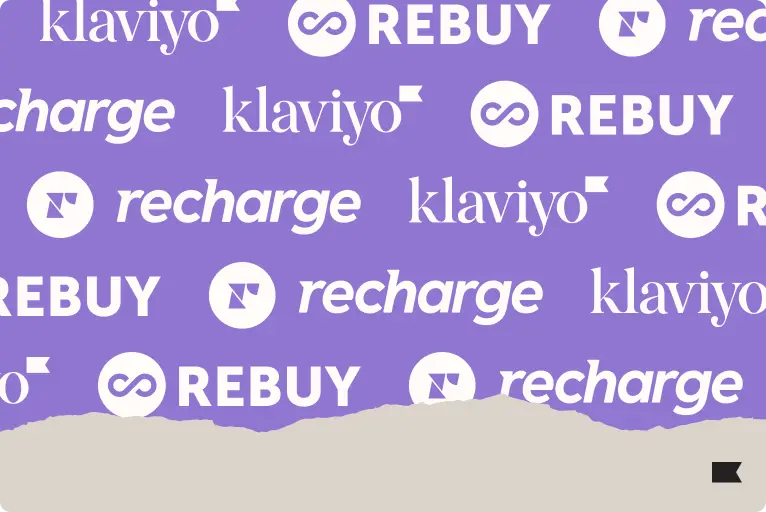
Looking for the best Shopify apps for marketing and customer service? Klaviyo, Rebuy, and Recharge together create a high-performing tech stack that revenue and customer retention.